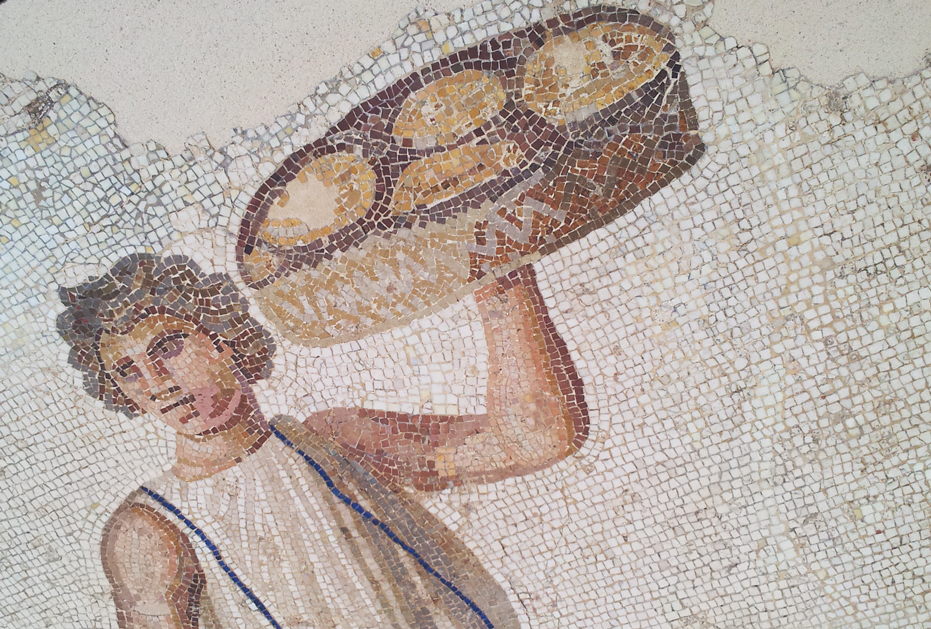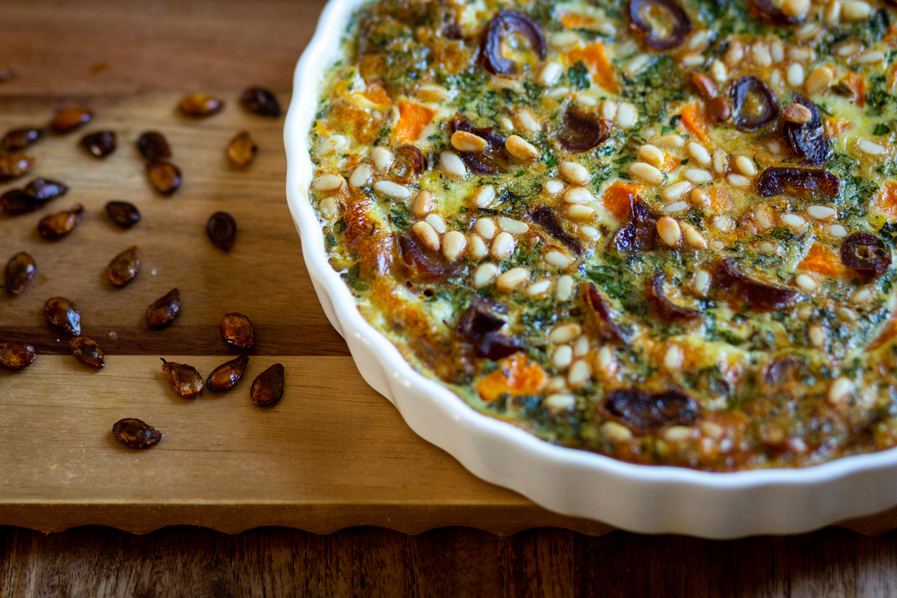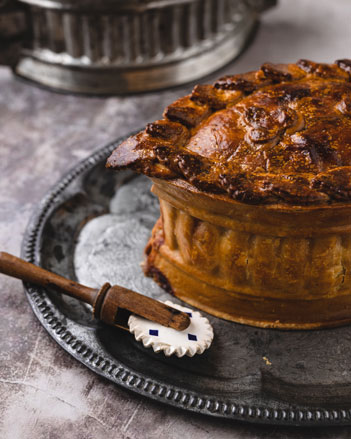I’m working on a series of recipes from the ancient world for Ancient History Magazine. For their new issue I created this Roman gourd dish: cucurbitas more alexandrino from the ancient cookbook of Apicius.
A lot has been written about ancient Roman history, but not so much about ancient Roman flavours. This is understandable, because unfortunately, flavours and smells are not handed down to us from history. It takes much experimentation, eating and training of the palate before you can say anything about Roman taste. After 20 years of experience with ancient Roman cuisine I am willing to give it a try.
Shopping lists
It is hard to imagine the taste of a Roman elite dish when it is your first time reading the only Roman recipe book that has come down to us from the ancient world. In this book, De re coquinaria, the combination of ingredients in the recipes makes you wonder how on earth someone ever invent these recipes. Well, recipes, they are more like shopping lists. Numerations of sometimes incoherent ingredients that shake up your palate. Furthermore, there are no quantities and preparation methods. Welcome to ancient Roman cooking!
Roman palate
In the past years I experimented with hundreds of ancient recipes. After a while I discovered patterns and fixed combinations of ingredients and seasoning. It gives us a direction in which we must look for ancient flavours.
Roman cuisine can best be characterized by combinations of sweet & sour and sweet & savory with some spiciness. It took me some time to figure out Roman taste, but now I am convinced that they were very good in balancing their flavours.

Salt
The most important flavoring of ancient Rome was without doubt garum, fermented fishsauce. It was the salt of the Roman kitchen. Romans made it by putting fish and salt in eartenware jugs or pots and let it ferment. After a few months you had a salty golden liquor. Plinius (23-79 AD) wrote about it: “except for perfume, no liquids are higher regarded”.
Garum adds a salty flavour to a dish. The use of salt is limited to just three recipes in De re coquinaria. While fishsauce is mentioned in 347 of the total of 459 recipes. But there is more to garum. Except the salty flavour it adds a very deep, complex, unique, difficult to define taste to a dish and it is not fishy. The best way to describe it is with the Japanese term umami.
Sweet and Sour
Romans were sweet tooth. The sweet flavour derives mostly from honey. Sugar as we know it today was unknown to Romans. Dried fruits, like dates, raisins and figs were also loved sweetenings in sauces, marinades, dressings and stews. And there was defrutum, sapa and passum, cooked grape must. The syrupy sweet (sometimes a bit smoky) juice gave dishes a surprising, deep, sweet flavor.

The sweet flavour was combined with sour flavours in more than half of the ancient recipes. Sour flavourings in ancient Rome were wine vinegar and wine. Citrus wasn’t used in the kitchen. Romans did know citrus fruits, but they were hiding in the medicine cabinet.
Spicy
Romans already used spices from the far East. Especially pepper was popular. They flavoured their dishes with black, white and long pepper. Long pepper is a variety from Indonesia with the same spiciness as black pepper, but with more aroma and smell. After pepper, cumin was used most. Both were not only used in savory dishes, but also in sweet dishes. Like fruit, honey or cream dishes. The exotic ginger and mastic were also used.
Green herbs were used by bunches. They loved coriander, mint and lovage most, according to the recipes. But mallow, fennel, rue, laurel, savory, oregano, celery, parley, caraway, dill and thyme were also used regurlaly.
Finally we must mention silphium. This herb from Cyrenaica (Libya) doesn’t exist anymore, although….. Legend tells us that Nero ate the last bit. A familiar herb is asafoetida, from India, which was already known by the Romans. It has a very strong sulfurous smell and must be used in small quantities otherwise it makes your dish very bitter. But what a taste! I absolutely understand why Romans loved it so much.
Roman flavour
We will never discover the exact flavour of Roman cuisine, because ingredients changed over time. Their quality, methodes of production, changes in species (especially fruits and vegetables) and therewith their flavour are not the same as 2000 years ago. But we can try to recreate them with what we do know. The forgotten ingredients like long pepper, garum and asafoetida and the surprising combinations of sweet & sour and sweet & savoury can inspire us today. Creative chefs and cooking enthusiasts already use Roman cuisine for culinary creations for our future cuisine.
Roman gourd dish: Cucurbitas more Alexandrino
This recipe from De re coquinaria is a perfect example of a dish with all the contrasting flavours of Roman cuisine. Originally it is a kind of stew with gourd. In one of my experiments with this recipes I made a patina of it (an oven dish bound with eggs). It was even better! This 21th century version has the same ingredients as in the original recipe, with only the addition of eggs.

Ingredients
1 bottle gourd
4 tbsp fresh mint
10 dates
4 eggs
2 tsp ground cuminseeds
2 tsp ground corianderseeds
2 tbsp red wine vinegar
4 tbsp defrutum
1 tbsp honey
2 tbsp olive oil
1 tbsp garum (fishsauce)
½ tsp asafoetida
1 tsp ground long pepper (or black pepper)
3 tbsp pine nuts
Preparation
Peel the gourd, remove the seeds and cut up the flesh in cubes. Chop the mint. Slice the dates in little rings. Put the eggs in a bowl and beat them with the cumin, coriander, vinegar, defrutum, honey, oil, garum, asafoetida, pepper and mint.
Grease a baking dish and spread the gourd over the bottom. Pour the egg mixture in. Spread the dates and pine nuts over the top. Bake the dish in a preheated oven, 350F/180C, for 15 or 20 minutes until the eggs are solidified. Sprinkle with ground pepper and serve warm.


